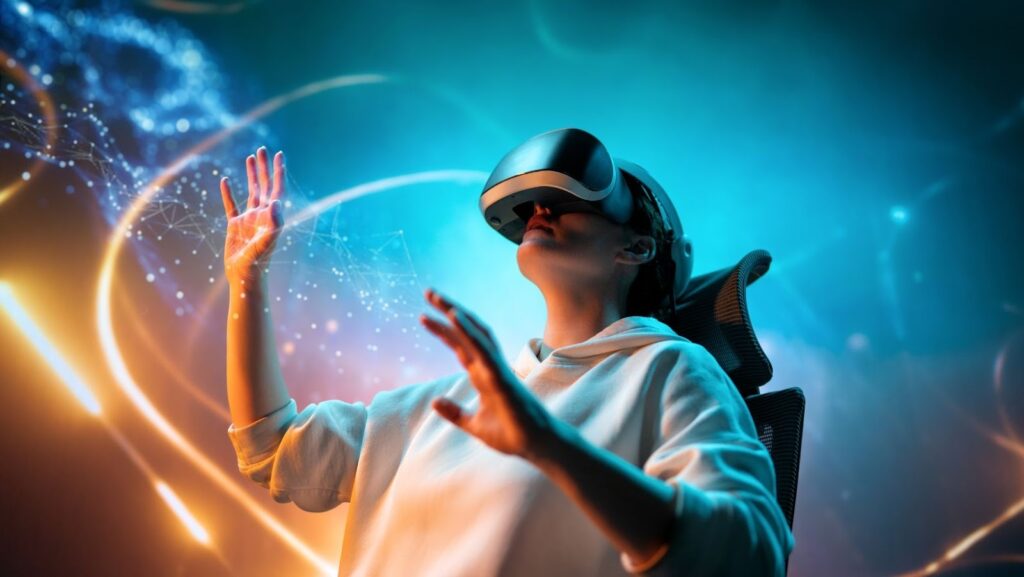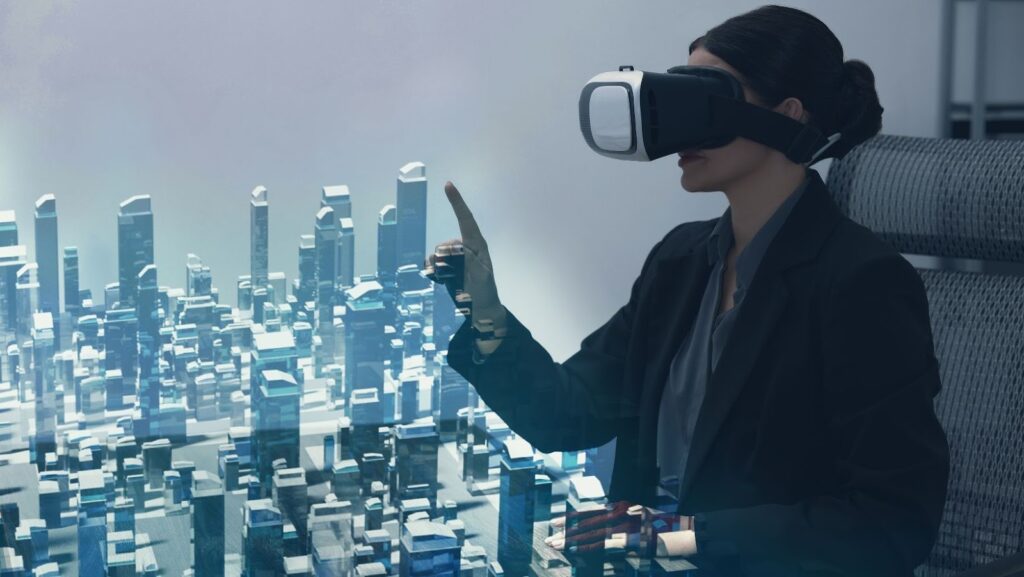These days, people are chatting from their kitchens, bedrooms, or even while walking the dog. Coffee shop conversations haven’t disappeared; they’ve just moved online. Instead of pulling up a chair at the local café, friends are opening apps and dropping into virtual spaces. It’s easy, it’s fast, and for a lot of people, it fits better into the rhythm of daily life. The shift is changing how we stay close!
Digital Worlds Feel More Real Now
Virtual spaces are no longer a novelty. With better design and faster internet, people can now talk, work, and relax online in ways that feel surprisingly real. You can see faces, hear voices clearly, and move through settings that look and sound familiar.
On platforms like VRChat, users create digital hangouts that feel like real meeting spots. Friends gather to talk, explore, or simply pass the time, much like they would at a neighborhood café. It’s become part of daily life in the U.S., where millions use these tools to stay connected.
In Canada, more and more players are turning to the so-called live dealer online casino experiences. Today, new casinos for Canadian players now stream poker, blackjack, and other games directly from studios with real dealers. It gives people the same sense of presence and interaction they’d get in a casino, without leaving home.
Elsewhere, digital tools have made remote work easier to manage. Apps like Microsoft Teams let colleagues brainstorm and share ideas in real time, even when they’re miles apart. These small shifts show how online spaces are blending into everyday routines.
What Sparked the Move Online
This shift toward digital socializing didn’t appear overnight. It started when people had no other choice, during the pandemic. This was a time when screens replaced open doors and packed cafés. Families gathered for dinners over Zoom, book clubs went virtual, and friendly chats moved into group calls. When restrictions eased, many simply kept the habit. It was easier, faster, and fit into their lives.
The faster internet helped make that possible. With stable connections and affordable devices, anyone could join in, from students in small towns to grandparents checking in from across the country. Technology made distance feel shorter.
The appeal also lies in variety. Physical cafés close early or get crowded. Online, the meeting place changes with a click. You can host a talk in a virtual park one day and meet at a digital beach the next. That kind of freedom attracts younger generations who like mixing routine with something new.
Why People Keep Choosing Virtual Hangouts
Ease is the biggest reason. You don’t need to drive, plan ahead, or check the weather; you just open your device and join. For many people balancing long workdays or family schedules, that flexibility means social time is still possible, even in short bursts.

Safety matters too. Bad weather or health concerns make staying home practical, but being at home doesn’t have to mean being alone. Online spaces fill that gap, keeping people connected in ways that still feel meaningful.
And then there’s reach. The internet lets a person in Winnipeg talk with someone in Berlin about music, sports, or shared hobbies. That sense of community stretches beyond local borders, adding something fresh to everyday conversation.
Even so, many still miss the comfort of physical contact: the sound of laughter, the smell of coffee, the energy of a real room. Yet with better visuals, realistic audio, and even sensory tech in development, that line between real and virtual is growing thinner each year.
Where It’s All Happening
Some platforms stand out as gathering points for these new digital habits. Roblox, once seen as a niche game, now hosts millions of people in shared worlds. There are concerts, art shows, and social lounges where strangers meet and stay friends.
Decentraland takes it in another direction, combining social life with ownership. Users can buy land, design their own venues, and host events, everything from open mics to business meetups. It’s a way to build identity and community in one place.
Rec Room leans toward play, offering games that turn into hangouts. A round of table tennis might lead to long talks afterward, making it feel more like a gathering spot than a competition.
Each of these spaces gives people a different kind of connection: some creative, some casual, some professional. Together, they’re shaping what social life looks like when the café, office, and living room all meet somewhere online.
Some Gaps Still Need Attention
As these digital spaces grow, a few cracks are starting to show. Spending long hours online can wear people down: mentally and physically. Eyes get tired, focus slips, and real-world activities sometimes take a back seat. Taking breaks and mixing in offline time helps keep things in check.
Then there’s the bubble effect. It’s easy to fall into circles where everyone thinks the same way, especially in online chats and forums. That can shrink perspective. To get more out of these spaces, it helps to join groups with different backgrounds or views.

And while access has improved, not everyone’s fully connected. Some rural or low-income communities still struggle with unstable internet or a lack of gear. That digital gap keeps certain voices out. Making sure more people can take part is still an ongoing job.
The Next Step Is Balance
Virtual meetups aren’t going away, and they shouldn’t. They’ve added something useful to how people connect, especially when life gets in the way of in-person plans. Still, making sure these spaces stay meaningful means knowing when to log in and when to step away. The goal isn’t to replace real life, but to build something alongside it that adds to the mix.

